AL NUSRA SAFELY EVACUATES FROM AL-WAER, HOMS (DAYS AFTER TERRORISTS MASSACRE OVER 100 CIVILIAN EVACUEES OF FOUA AND KAFRAYA)
Posted on April 20, 2017 by martyrashrakat
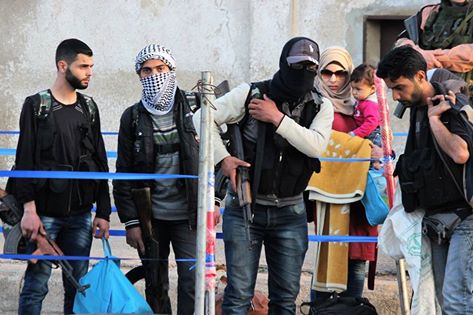
Photo by Vanessa Beeley, who writes: “The look of hate. A Nusra Front terrorist waits in Al Waer, Homs to board the buses that will take them to safety in Idlib and then Turkey, the destination of their choice. Syrian Government justice and Amnesty compared to UK/US/NATO insanity”
British independent journalist Vanessa Beeley was on April 18 with an international delegation in al-Waer, Homs, during the 5th evacuation of terrorists of al-Nusra and other militants occupying the area for years.
In March 2017, Syrian journalist Mohamed Ali reported from al-Waer, during one of the earlier evacuations, noting that the evacuation was being done by Syrian Red Crescent, Russian military police and Syrian security personnel and that no UN personnel were involved.
Regarding that evacuation, Syrian media, SANA, reported:
“150 persons from al-Wa’er neighborhood in Homs had their status settled according to amnesty decree No. 15 for 2016 and in light of the reconciliation agreement reached last Monday.
Over 1400 gunmen and members of their families, who rejected to join the agreement, have left al-Waer neighborhood on the western outskirts of Homs city.
They left for the northern countryside of Homs province in the framework of implementing the reconciliation agreement that was reached in the neighborhood, paving the way for the return of all the governmental institutions to it.”
Of the April 18 evacuation, Vanessa Beeley wrote:
“Today in Al Waer, Homs we witnessed the evacuation of Nusra Front fighters and families to Jarablus and then Turkey. Under the Syrian government Amnesty and Reconciliation agreement they were able to leave with their weapons, safely to their destination of choice. In stark contrast to the horrific treatment of civilian evacuees from Kafarya and Foua who were massacred in Rashideen by a suicide bombing carried out by US funded extremists. We in the ‘civilized’ west bring barbarism to a country that is consistently demonstrating the meaning of true civilization, dignity and humanity…They were successfully taken to Idlib as a first step on their way to Turkey, under the Syrian government Amnesty and Reconciliation policy, 2010 people have been evacuated from Al Waer, including 519 Nusra front terrorists.”
[Related: Vanessa Beeley’s “Images from after Rashideen massacre, buses and survivors who were taken to Jebrin after NATO and Gulf state terrorists had torn their lives apart.”
Of the April 18 evacuation, SANA reported:
“Homs Governorate on Tuesday finished the evacuation of the fifth batch of militants and some of their families from the western parts of al-Waer neighborhood in a step towards clearing the neighborhood of weapons and militants and restoring state establishments to it.
SANA reporter said that the fifth batch included 519 militants and hundreds of their families who reject the reconciliation agreement. The reporter added that 55 buses transported the militants and their families towards the northeastern countryside of Aleppo under the supervision of the Syrian Arab Red Crescent, the Internal Security Forces and the Russian Military Police.
On Monday afternoon, the fifth batch of militants and some of their families started to leave al-Waer neighborhood as Homs Governor Talal al-Barazi stressed that by the end of the current month the reconciliation agreement in al-Waer neighborhood will be accomplished completely to start the rehabilitation of the damaged facilities and infrastructure inside the neighborhood…”
More al-Waer photos by Vanessa Beeley:
*
In December 2015 I visited al-Waer. Even while al-Nusra and other terrorists occupied al-Waer, the Syrian government was sending in food and medicine, providing bread, and services like electricity and water were better than in greater Aleppo under bombardment from terrorists.
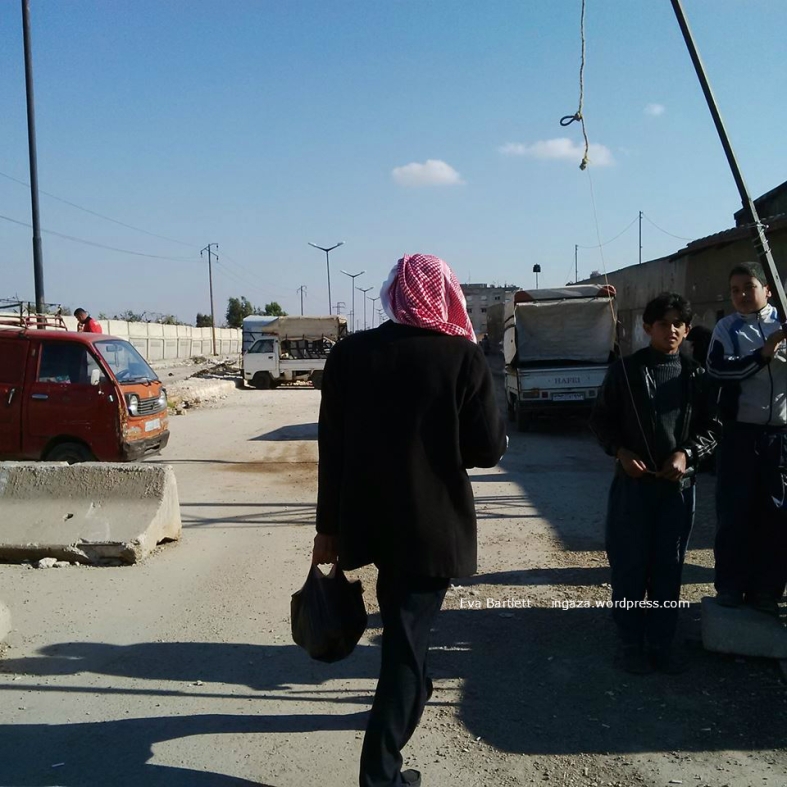
On that December visit, I wrote:
Listening to my recording from en route to al-Waer, Homs, a couple of weeks ago. The Syrian journalist from Damascus with me cautions:
“We should be more careful now, because everyone on the other side can see us very well.”
I asked how many terrorists remained. A Homs journalist, Hayat, tells me:
“There are those (terrorists) who did not want to participate in the Reconciliation, to leave al-Waer. The people who left were 447 civilians and 100 fighters (without guns) who left with a civilian convoy; 172 fighters (with guns) left–those fighters don’t want to make Reconciliation with the government. 20 wounded (fighters and civilians) needing emergency care left in ambulances. Around 2,200 or more fighters remain in al-Waer.”
Getting closer to al-Waer, the driver teases, “shall we enter?” “We are in the front-line now,” he says. Hayat, gets serious, saying:
“It’s not safe, at any moment they could do anything, break the ceasefire.”
The Damascus journalist with me says, “We are beside the fighters, we are too close to the fighters now, we must be careful.”
We arrive at the last military checkpoint, the entrance to al-Waer.
The bread factory at the entrance to al-Waer produces the bread for the population within, wheat provided by the Syrian government.
According to Hayat, the Homs journalist I was with, although 292 terrorists (as well as 447 civilians) left al-Waer in a December agreement, 2200+ terrorists remain within al-Waer, with another 150,000 civilians–from a population that was 750,000. The Syrian government continues to supply not only wheat/bread, but also electricity and water, although according to Hayat, the people inside do not pay:
“They don’t pay for power, water… the area is not under control of government. Fighters don’t allow people to pay—in order to cripple the government. If people paid and were found out, fighters would kill them.”
*At the end of this clip, Hayat is telling me that the people from inside al-Waer will come to get the bread, and that the boy in the background is from al-Waer.
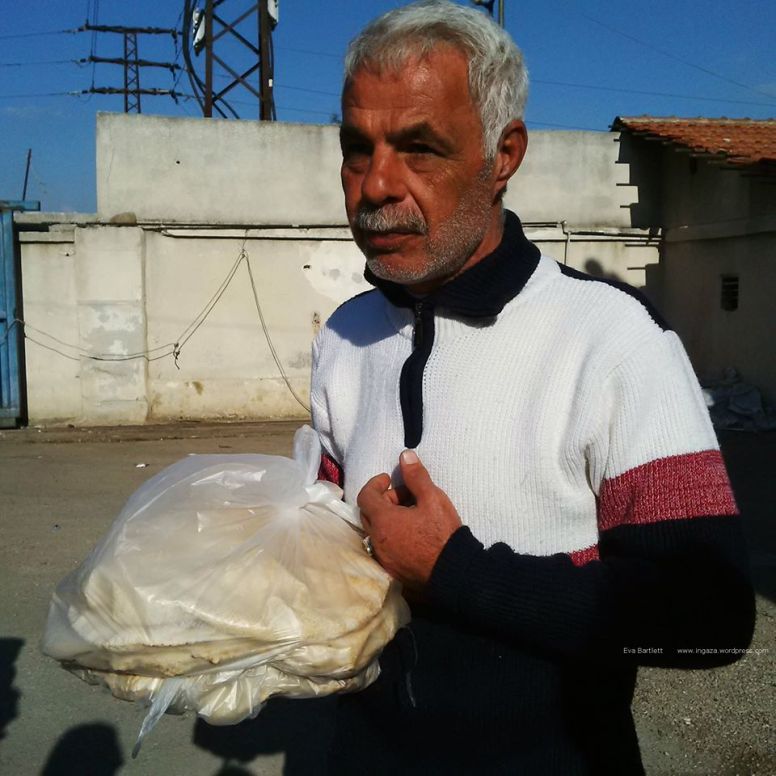
Tariq, a Palestinian resident of al-Waer, born in 1957, is originally from Akka. Of his life in Syria, he (like every other Palestinian friend or person I’ve met in Syria) told me: “The Syrian government treats me as well as a Syrian.”
**In this photo, he was picking up bread to take back to his family in al-Waer (who called his mobile as we spoke, concerned about where he was since he had taken longer than usual, stopping to talk with me).
Related: A 2014 article on Reconciliation movement in Syria, including an interview with the Minister of Reconciliation, Dr. Ali Haidar.
In contrast to the long-occupied al-Waer, the Old City of Homs saw terrorists evacuated to elsewhere in Syria in May 2014, enabling residents of Homs to start to rebuild their lives, the reign of terror for them over. Excerpts from my June 2014 visit to Old Homs, interviewing survivors of the terrorists’ occupation:
Some of those residents who had stayed on in the Old City of Homs during the siege talked to IPS about their ordeals and losses at the hands of armed groups, including Nusra and Farooq brigades. Many of them argued that what had happened in Homs was not revolution, as Dutch Jesuit priest Frans van der Lugt had argued before he was assassinated, just one month before Homs was liberated.
“I was baptised in this church, got married in it, and baptised my children in it,” said Abu Nabeel, a resident of Homs’ Old City. The St. George Church, with its crumbling walls, is one of 11 reported destroyed in the Old City. It no longer has its wooden ceiling and ornately-carved wooden ceiling panels and wall lattice lie in heaps outside the ancient church.
“Most of the damage is from the last days just before the insurgents left,” he said. “But we’ll rebuild.” That rebuilding has already begun, with residents scraping away rubble and re-paving small areas that had been damaged.
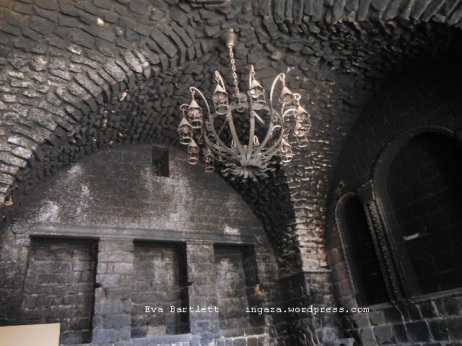 The arched interior of the St. Mary’s Church (Um al-Zinnar) bears the char marks of its burning by retreating insurgents. Like many others, the church was looted of objects and vandalised, with the insurgents leaving sectarian graffiti on the walls. “Symbols related to Christianity were removed. Even from inside houses. If you had a picture of the Virgin Mary, they removed it,” said Abu Nabeel.
The arched interior of the St. Mary’s Church (Um al-Zinnar) bears the char marks of its burning by retreating insurgents. Like many others, the church was looted of objects and vandalised, with the insurgents leaving sectarian graffiti on the walls. “Symbols related to Christianity were removed. Even from inside houses. If you had a picture of the Virgin Mary, they removed it,” said Abu Nabeel.
Volunteers have now planted a garden in its courtyard, which they say is an attempt to “bring some beauty back” to Homs.
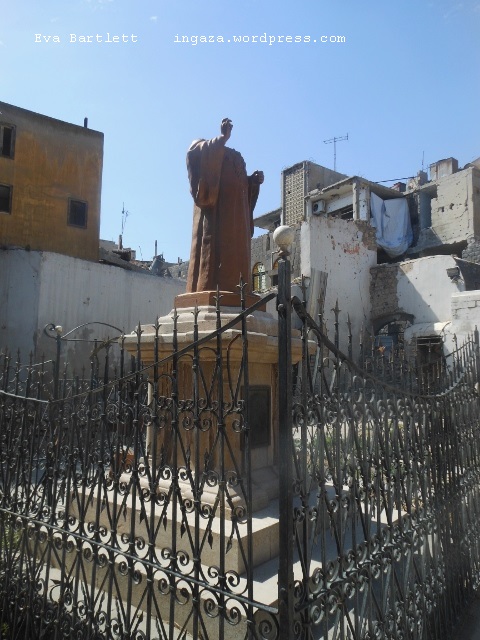
A statue in the courtyard of the Church of the 40 Martyrs stood headless. “This was one of the founding fathers of the church, so they cut the head off the statue,” said Abu Nabeel.
The church itself was less damaged than others, but Abu Nabeel noted that “they burned the pews, for heat.”
Outside the door of an old but intact building, a few men hosed down the street and repaved small sections of the walk.
“This was one of the biggest restaurants in the Old City of Homs. People used to hold weddings here,” Abu N said of the building. “It was used as a headquarters for the insurgents. There was some damage inside, but they have already fixed a lot of it.”
Youth volunteers on a street in Bustan al-Diwan painted over the insurgents’ graffitti and used shattered glass from the Church of Saida Salaam to create a colourful mosaic.
Rubble which littered the streets had been swept into heaps in the centre of some lanes, allowing people to pass.
A man brushed rubble off the second story ledge of his building, one of few people around in the Old City in spite of the calm.
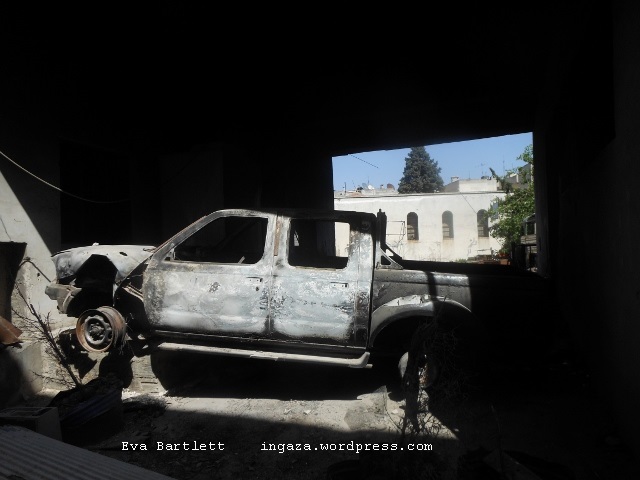 Further along an Old City lane, a blown-out wall revealed a burned pickup truck the insurgents used in their attacks, and the school beyond which they had occupied until the day of their departure from Old Homs. The bombed truck was but one example of the final destruction of retreating armed gangs.
Further along an Old City lane, a blown-out wall revealed a burned pickup truck the insurgents used in their attacks, and the school beyond which they had occupied until the day of their departure from Old Homs. The bombed truck was but one example of the final destruction of retreating armed gangs.
Abu Nabeel explained that the insurgents mined the area before leaving. “They left booby-trapped explosives in the houses, all over, even behind paintings on the wall.”
In the courtyard of the Jesuit church sat a lone plastic chair adorned with flowers and a photo of Father Frans van der Lugt, the Jesuit priest assassinated on April 7, 2014.
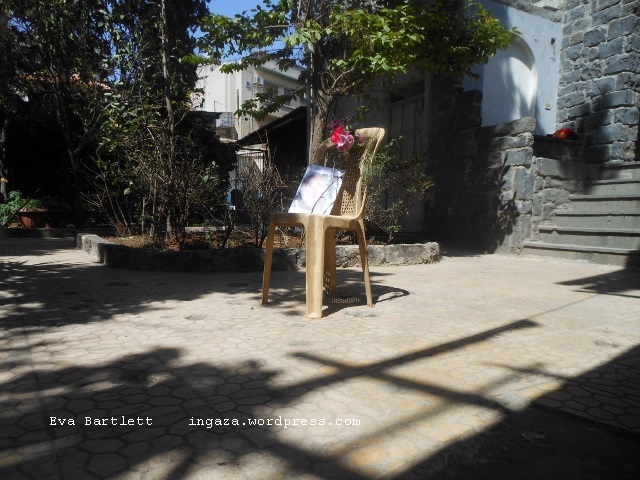
Nazim Kanawati, who knew and respected the Jesuit, arrived moments after the 75-year-old priest had been shot in the back of the head.” We were surrounded and under siege. This was the only place we could go to. Everyone loved it here,” he said.
“Father Frans was a peace-maker and played an important role in arranging the evacuation of civilians from the Old City during the siege. He was trusted by both sides, and didn’t distinguish between Christians and Muslims. He was concerned with humanity.”
Like Father Frans, Kanawati refused to leave Homs while others fled. “I didn’t want to leave, I’m a Syrian, I had the right to be there.”
Although he chose to stay in the Old City, Father Frans was critical of the insurgents. In January 2012, he had written: “From the start I saw armed demonstrators marching along in the protests, who began to shoot at the police first. Very often the violence of the security forces has been a reaction to the brutal violence of the armed rebels.”
“People in Homs were already armed and prepared before the protests began,” said Kanawati. “If they hadn’t been planning for the protests from the beginning, the people wouldn’t have had the quantity of arms that they had.”
Abu Nabeel explained that in addition to the Hamidiyeh district where various old churches are to be found, Christians in other areas occupied by the armed insurgents also fled. “There were an estimated 100,000 Christians living in the Old City of Homs before it was taken over by terrorists. Most fled in February 2012. By March, only 800 had stayed, and by the end just over 100 remained,” he said.
The siege that the Syrian army enforced on the Old City in an attempt to drive out the insurgents had a drastic effect on the daily lives of those remaining.
“Suddenly, we didn’t have electricity or water. We had to wait for the water trucks to refill tanks,” said Kanawati. “There were many elderly who couldn’t leave their homes. We’d take food and medicine to people in the community.”
Before Homs was freed of the armed insurgents, who were also stealing from homes, life had become impossible. “There was food at the beginning, but it started to run out. At the end we had nothing, we ate whatever we could collect,” said Kanawati.
No one expected the priest himself to be killed, Kanawati attested. “Someone who was probably in his twenties came here, his face covered, came and ordered Father Frans to go with him. Father Frans refused. So the man told him to sit on this chair, and shot him in the head.”
Abu Nabeel added another piece of information regarding van der Lugt’s murder.
“Three or four days before Father Frans was killed, the Syrian army had targeted a vehicle filled with explosives, which the insurgents were planning to send into the city. Many of the insurgent leaders killed were less extreme that the foreign insurgents, and had been protecting the church. After their deaths, the other insurgents went to the church and demanded Father Frans hand over the valuables residents in the area had left with him for safe-keeping. He refused, so they killed him.”
Mohammed, a Syrian from the Qussoor district of Homs, is now one of the reported 6.5 million internally-displaced Syrians.
“I’m a refugee in Latakia now. I work in Homs, two days a week, and then return to Latakia to stay at my friend’s home. I left my house at the very end of 2011, before the area was taken over by al-Nusra and al-Farooq brigades.”
He spoke of the sectarian nature of the insurgents and protests from the very beginning in 2011.
“I was renting a home in a different neighbourhood of Homs, while renovating my own house. Just beyond my balcony there were protests that did not call for ‘freedom’ or even overthrowing the ‘regime’.They chanted sectarian mottos, they said they would fill al-Zahara – an Alawi neighbourhood – with blood. And also al-Nezha – where there are many Alawis and Christians.”
“My aunt lives in another neighbourhood nearby. She’s Allawi and her husband is Sunni. Because she is Allawi, the ‘rebels’ wanted to kill her two sons. I chose Bashar al-Assad, so they said, ‘we will kill you, because you chose him.’”
The windows and door handle to the home of Aymen and Zeinat al-Akhras were missing, but the house itself was intact. Zeinat, a pharmacist, and Aymen, a chemical engineer, survived the presence of the armed men and the resulting siege on the Old City.
Every space in their small sitting was filled with the books and boxes fleeing family and neighbours, entrusted to the Akhras siblings who chose to weather the storm.
“We didn’t leave, we chose not to.” said Zeinat.
“Our family shop is about 75 years old now,” Aymen added. “We didn’t want to lose it or the merchandise.” Much of it he brought to the home, moving from shop through a hole in the wall to the back yard, so the insurgents wouldn’t see and steal the goods.
The area was taken over in two stages, they explained. “First, the insurgents reached near our house, while the Syrian army was on the other side. Fifteen days later, the insurgents brought more forces and arms and took over the area, killing all of the Syrian soldiers in that area. In February, 2012, they took over the Old City completely,” Aymen said.
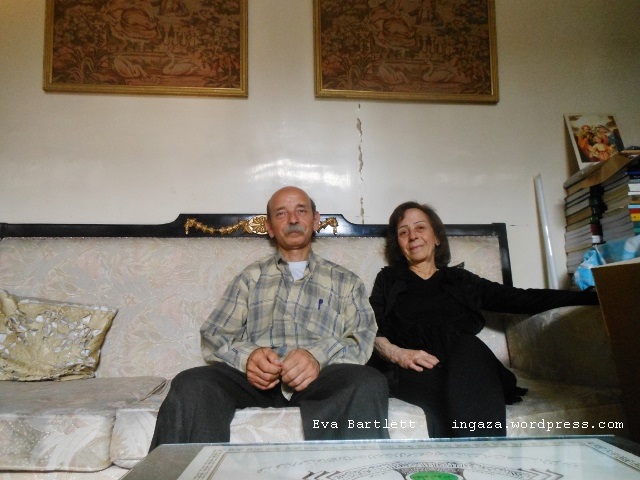
Zeinat spoke of the power cuts, which sometimes lasted give days, and the lack of cooking gas.
“We started using the wood stove. We’d put the pot on at 10 am, eat at 4 pm… It didn’t matter that we didn’t have electricity for the fridge—we had no food to put in it,” she said.
“I’ve gained five kilos!” Zeinat said. “I dropped to 34 kilos. Aymen told me to weigh myself. I got on the scale and said, ‘What’s 34 kilos?’. A ten-year-old weighs more than that! And Aymen was 43 kilos. For a man, 43 kilos,” she said laughing.
The drastic drop was not due to ill-preparedness. To the contrary, Zeinat said they had enough food to last a year.
“We were twelve siblings with eight houses in the area, and the family house. We all had stores of food.”
But the stores of food didn’t survive the looting of the insurgents.
“Thirty-eight times they came to steal our food. The first couple of times, they knocked on the door, after that they just entered with guns. The last things they took were our dried peas, our cracked wheat, our olives, finally our za’atar (wild thyme). We started to eat grass and whatever greens we could find in February, 2014, and that’s all we had till Homs was liberated,” Zeinat said.
“The last time they came all we had were some spices. I was putting the spices on the grass and weeds that we were eating at that point, to give them some flavour. They even took the spices. They didn’t leave us anything.”
The insurgents also stole valuables. “Money, gold, and they took my passport,” Zeinat laughed. “What do they want with it?”
Abu Abdu had a home in a district of Homs between Khaldia and Bayada
“I was never interested in politics, I’d always change the channel if it was news. But when the events started here, and we began to see the lies, my sense of nationality awoke and I began to look at the news all the time,” he said.
Showing video and photos of his area, he explained, “This is our apartment building, we were on the third floor. I took this footage around May 10, after the insurgents left Old Homs.”
“They took our personal belongings, our money, they stole everything, even the pumps used to pump water up to the higher floors. They stole the electrical wiring, the electricity meters, the taps in the kitchen and bathroom, the engine of the washing machine… they couldn’t take the whole machine so they took the engine. They took the ceiling fan, the wall tiles…They broke my daughter’s wooden jewelry box to get the 100 Liras in it of different Syrian coins her fiance had given her as a gift. All that effort for 100 Syrian pounds (about $1.50),” he said.
Meanwhile, despite the return of calm to Homs’ Old City, insurgents continue their campaign of car-bombing civilian areas of Homs. Tens were killed by car bombs and rocket attacks in June alone.
On June 19, Sana news reported six killed and forty injured in a car bombing, as well as seven killed, 25 injured six days prior.
The Syrian government, however, continues efforts to restore normality to the city. On June 26, Sana news reported that the Minister of Culture, Lubanah Mshaweh, said plans were underway for the restoration of Homs’ Khalid Ibin al-Walid Mosque, St. Mary (Um al-Zinnar) and 40 Martyrs churches.
Also on June 26, the Nusra brigades, an al-Qaeda affiliate and one of the main factions which occupied Homs, is reported to have pledged allegiance to the Takfiri extremist Islamic State in Iraq and Syria(ISIS).
This allegiance to a group documented to have beheaded, mutilated, crucified and flogged Syrians and Iraqis gives more credence to Homs’ residents’ opinion that the events in Syria are no revolution.
In December 2015, I returned to Old Homs Excerpts include:
“When I visited in June 2014, after the terrorists had been extracted from most of Homs, the destruction and vandalism I saw were immense. Even back then, as soon as the terrorists were gone, Old City residents were already returning in trickles to begin the cleanup and think about re-building their lives.
Now, a year-and-a-half later, while immense reconstruction remains, there was a significant improvement. I saw new shops opened, and saw homes, stores, streets, and churches decorated in the spirit of Christmas.
Christmas lights dangled over Old City lanes and in church courtyards. A friend from Homs later sent me photos of the streets lit up at night, and of the once-burned St. Mary’s Church (Um al-Zinnar) now repaired and decorated, and filled with worshippers, a youth choir and band.
At the Old City’s Jesuit Church, new portraits of Dutch priest, Father Frans van der Lugt, assassinated in April 2014 by the West’s “moderate” terrorists. The church also had a simple Christmas tree and home-made nativity scene, the grotto walls of which were made of crumpled brown paper.
Two well-known restaurants, which suffered differing degrees of destruction, have been re-opened. Beit al-Agha, greatly-damaged by the terrorists, is now coming back to life, although repairs are still needed. Al-Bustan restaurant, which was completely ravaged, is fully re-built and open to customers. Photos from al-Hamidiya Community Facebook page show a packed restaurant during Christmas, and dancing at night. The page shows celebrations in the different churches and streets of old Homs.
In Saha al-Majaa, an Old City square, I saw six locals adding finishing touches to the Christmas tree they’d crafted using scavenged and bought materials. In a nearby room, full-size nativity scene figures, made of sponge and cloth and other basic materials were stored until the display went up. Neighbourhood residents had chipped in for fabric, bought from Tartous.
“Come, tomorrow at 5 pm and you’ll see the finished display,” I was invited, but didn’t have the chance to get back. However, photos on social media show their creative efforts have paid off: in this square where despair was once deep, hope is flourishing anew.”
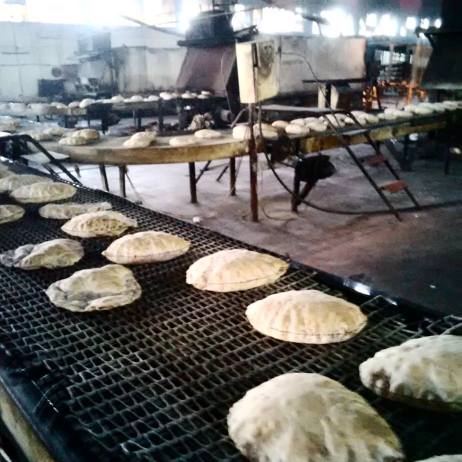
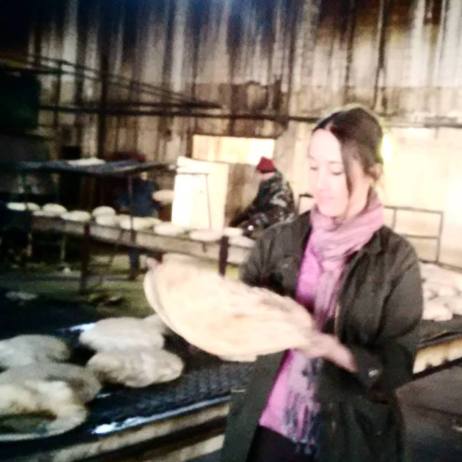
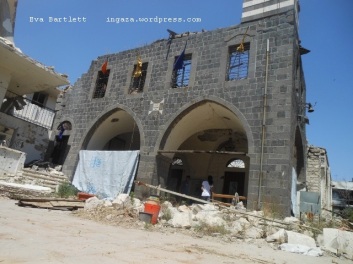
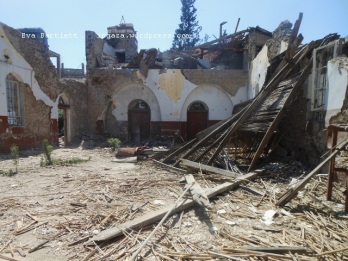
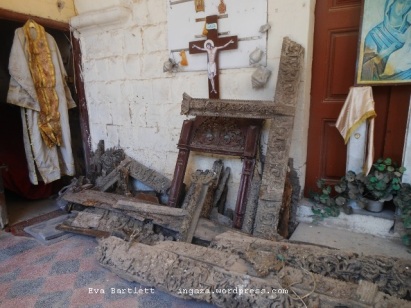
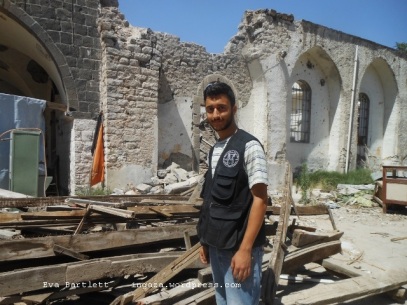
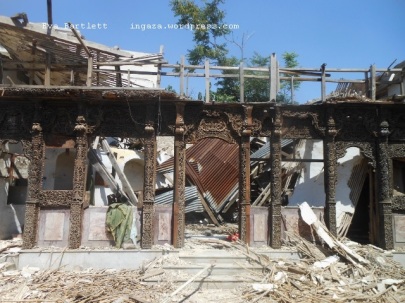
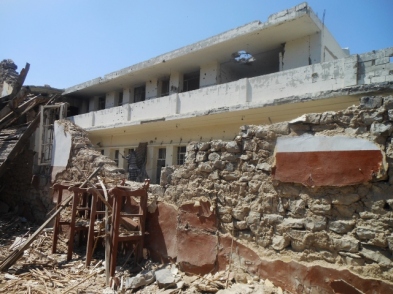
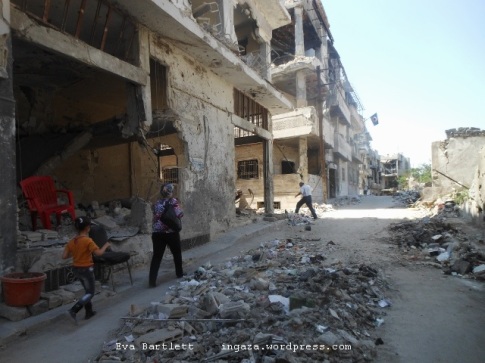
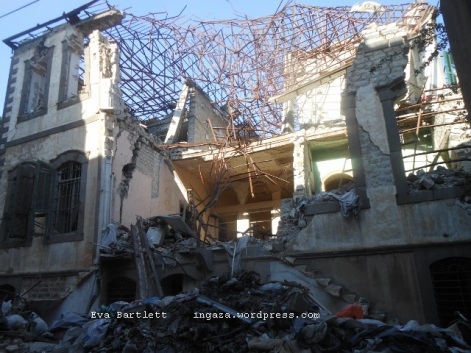
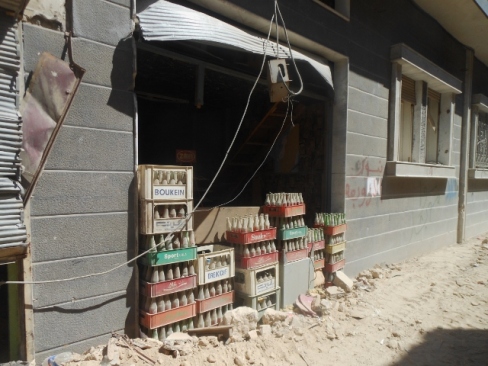
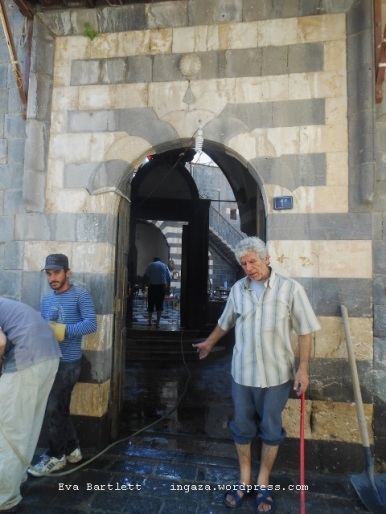
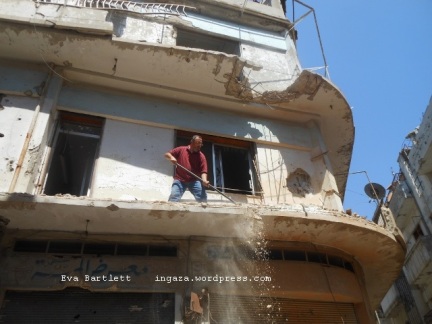
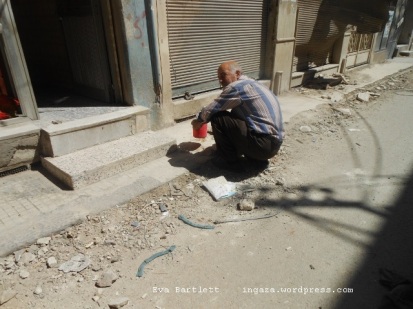
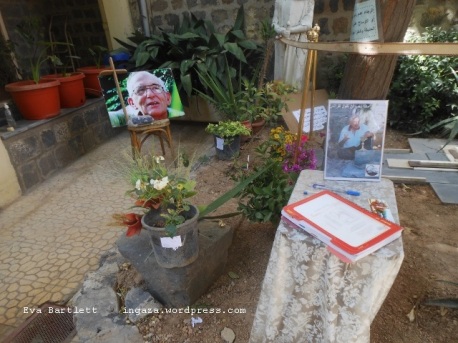
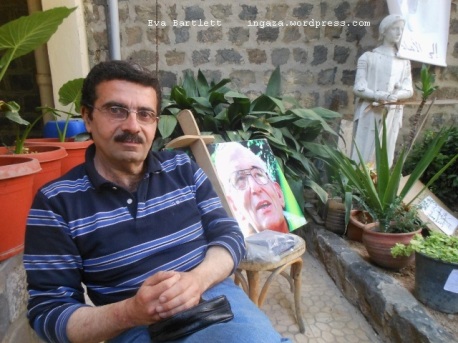
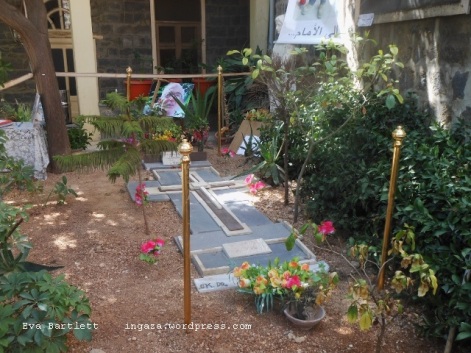
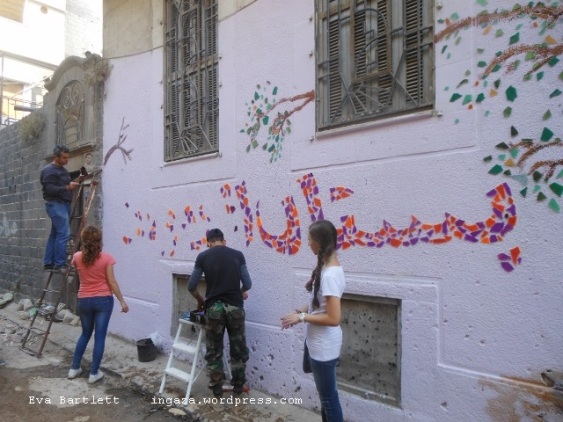
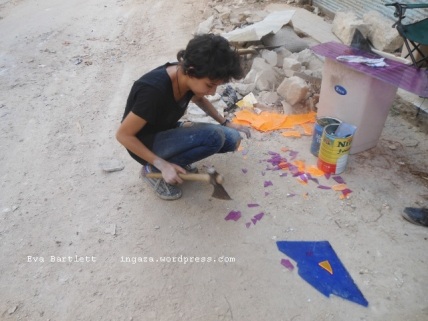

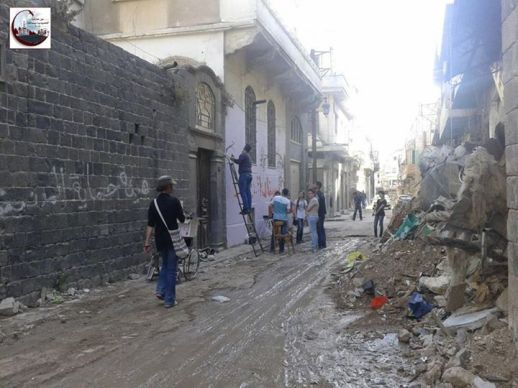
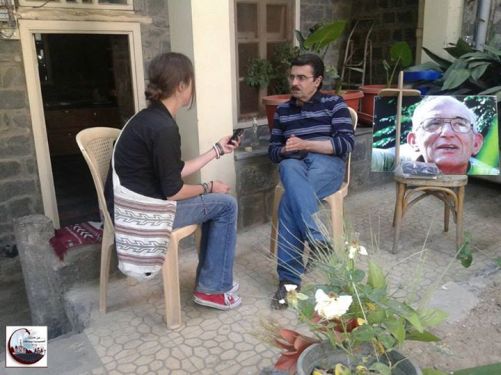
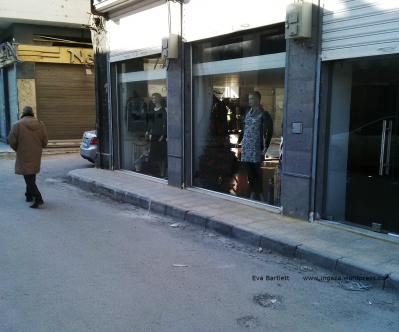
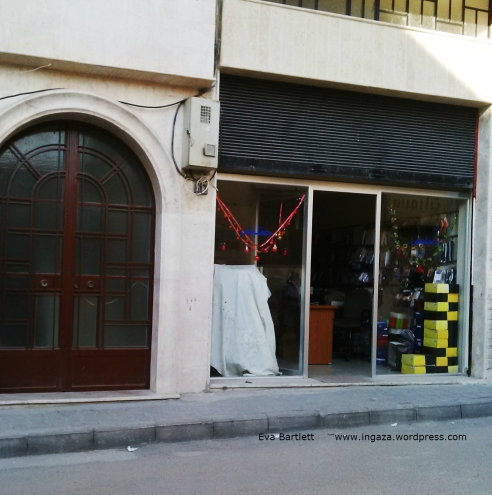
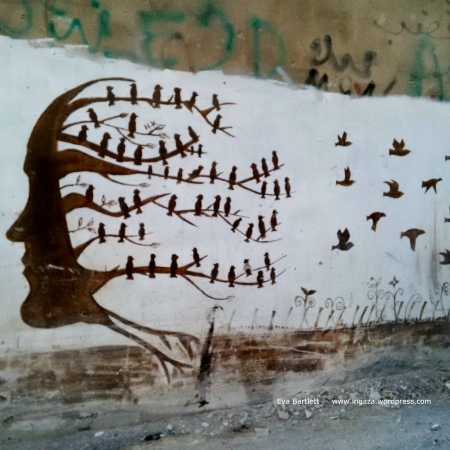
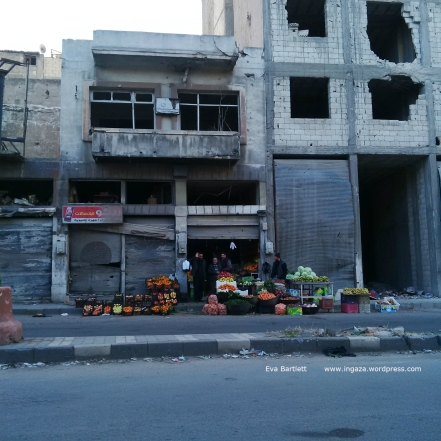

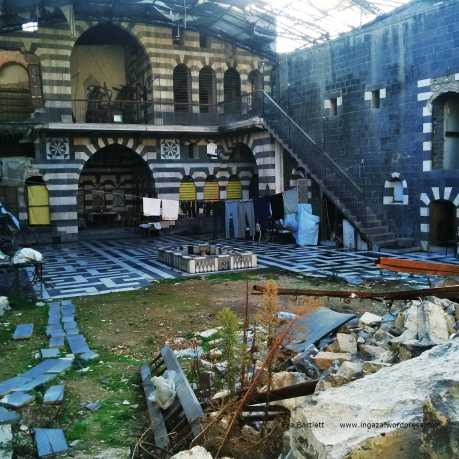
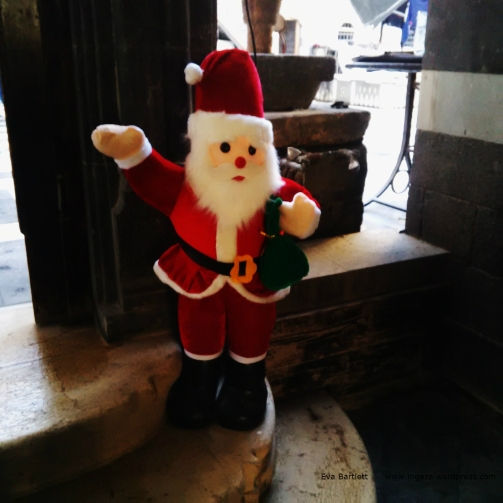

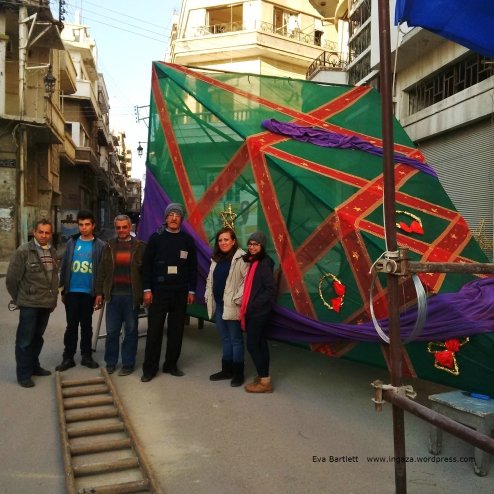
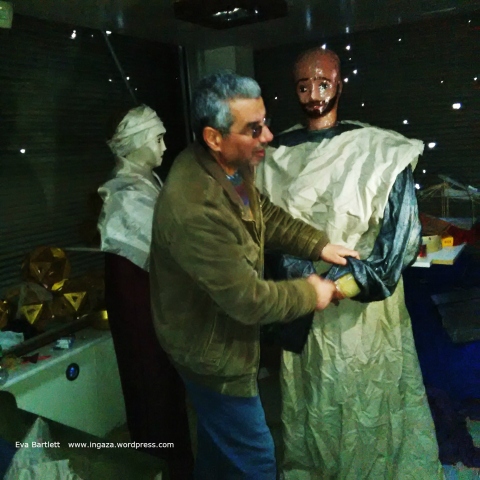
No comments:
Post a Comment